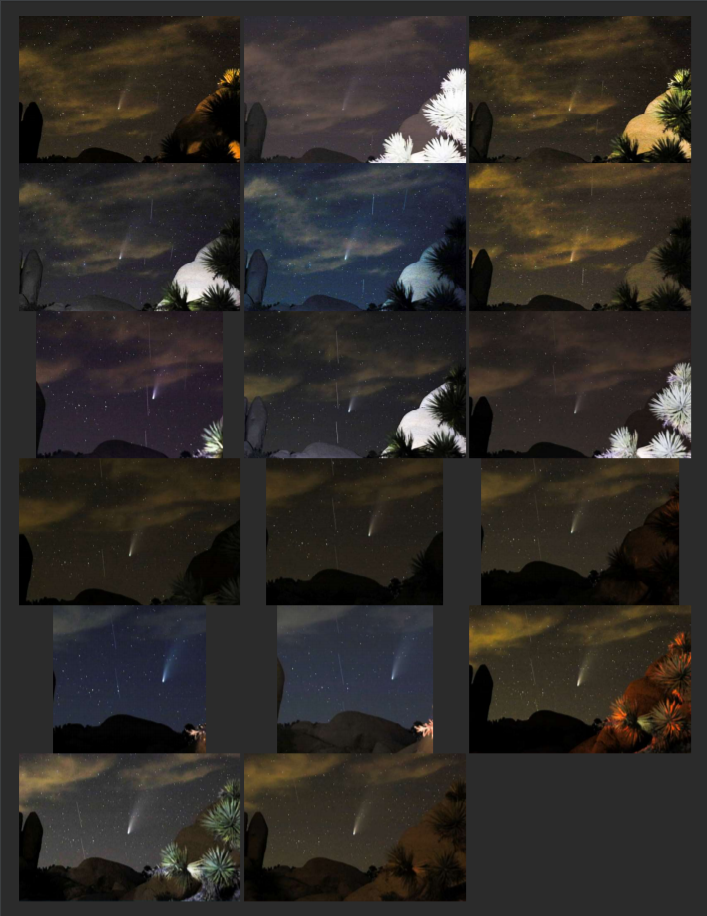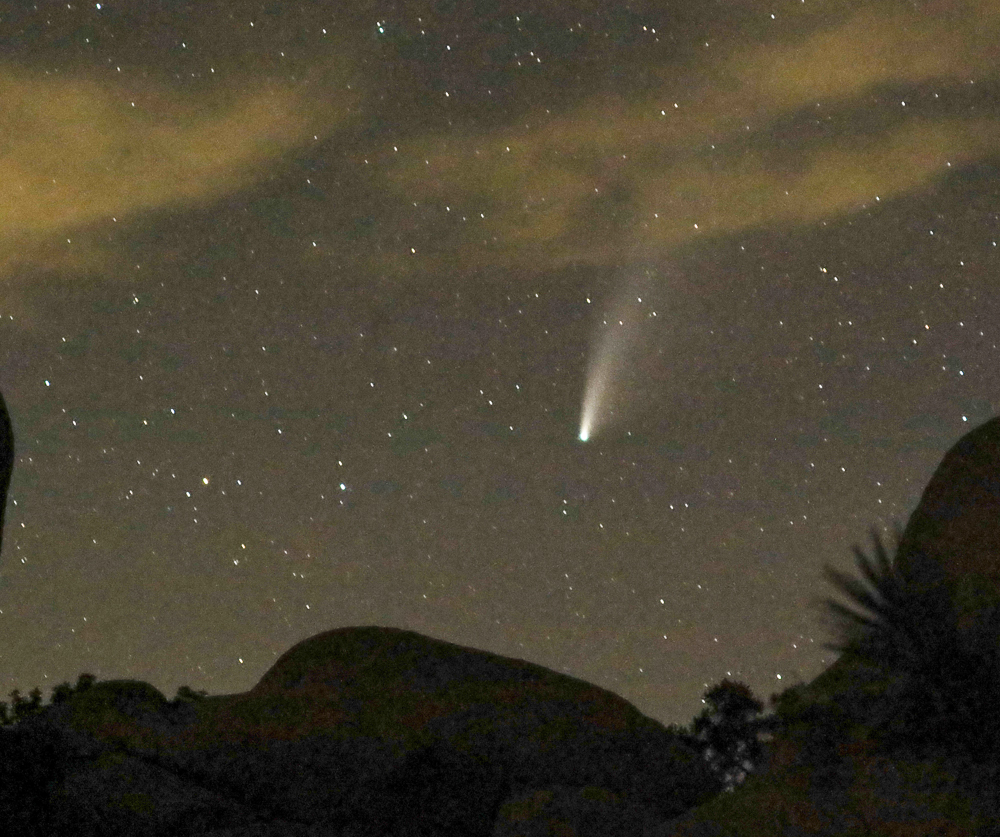
|
Starlink Satellites and Astrophotography |
|
|
[August 2020]
There has been much hype (and worry) about the SpaceX Starlink satellite network due to the large number of low-earth orbit satellites (currently 12,000 approved by the FCC, 42,000 requested). A major concern is the interference it would cause for astrophotography. Below is a little test to see how big a problem it would be for amateur astrophotography. Professional astronomy is another area which is not addressed here. Note that at this time, the majority of Starlink satellites in orbit do not have the black coating or sunshades which are being tested by SpaceX to reduce visibility of the satellites.
At this time, I have not picked up the Starlink satellites in my shots as far
as I am able to tell. The images shown below were provided by Tom Munnecke (Thanks!).
These were provided in .jpg format
and were moderately wide-angle shots taken from Joshua Tree National Park for the purpose of
combining the landscape with Comet NEOWISE in the sky.
Because of this, the shots were taken from slightly different positions, different
exposures, foreground lighting, and clouds. The "final" shots below have not been
processed beyond what's necessary to see the differences.

If your intent is to take a single frame for a landscape astrophoto, you would have to "clone" out the satellite trails as in the example below.
"Normal" practice in astrophotography is to combine (stack) multiple images to reduce the noise of long exposures and allow enhancement of contrast. depending on what features you want to enhance or eliminate. For the examples below, all of the images shown above were registered to the first frame by using Registar, a program designed to locate the stars in a reference image and scale/rotate/deform the other images to match the reference image. The registered images can then be stacked using a variety of methods, depending on what features you want to enhance or eliminate.
Final CommentsWhile the Starlink and other low-Earth orbiting satellites may be a nuisance, I don't expect it to impact my astrophotography. For the moment, wide-angle shots taken near sunrise or sunset are most impacted, but should not be a particular problem for narrow-angle telescopic shots, especially when using the techniques I'm already using to cope with satellites as well as airplanes. Much more of a problem to worry about is human light-pollution from city lights. |
|||||||||




